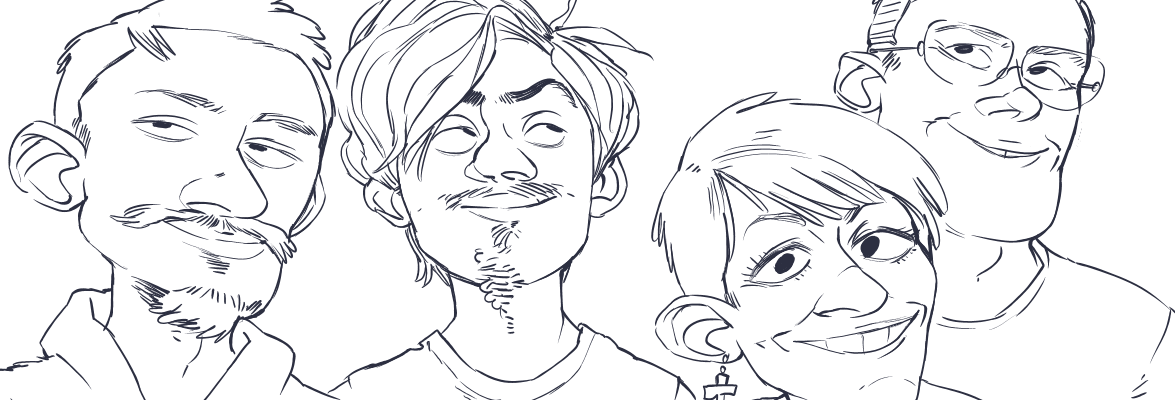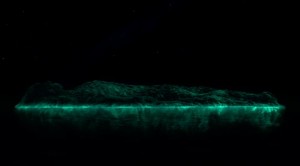I know from reading reviews that many people loved this movie, and some people didn’t like it. Count me among the latter camp. Life of Pi is a visually rich story of mysticism. I have huge respect for director Ang Lee, and I love the risks he’s willing to take with his filmmaking. My complaints with this movie are mostly a matter of personal taste, although I’ll show you that the Enneagram has a few problems.
1
We have a bookend beginning of grown up Pi telling the story of when he was a young man. Flashbacks and an introduction to India are the establishing motifs. We meet boy Pi and learn the circumstance of his name. The imagery here is lovely and boy Pi is engaging.
2
The Two-Trouble for this movie is religion. Pi’s on a journey to discover God. He comes from a Hindu tradition but explores other faiths, including discussing Christ with the local Catholic priest. He ends up thanking Vishnu for introducing him to Christ. Especially noteworthy is the carving of Vishnu Pi keeps. We’ll see this image again later. Juxtaposed with Pi’s faith, though, is his father’s argument for reason as a means to understanding, rather than a reliance on what religion teaches. Which path will Pi take? Religion and reason appear to be in conflict.
3
The mirror events are: looking in the tiger’s eyes. We’ll see it again at the 6. Boy Pi thinks he sees compassion in the caged tiger’s eyes. His father sets him straight ricky-tick. “All you see is the reflection of your own emotion.” To make his point, the father ties a goat to the cage door and makes Pi watch the tiger eat it. This is not a scene for young children.
4
Pi grows older; different actors, all good, portray him. The Pi who will become stranded on the boat for the rest of the movie gets a girlfriend, whom he then has to leave. His father prepares to move the zoo animals and the family to Canada. Unfortunately, I don’t remember much happening in this section. In hindsight I think it was short. Really, this is a story where you just want to get onto the boat.
By the way, if you are reading this in the hopes of seeing no spoilers, avert your eyes immediately ’cause here we go.
SWITCH
The ship sinks. Pi’s family drowns and a couple of animals end up in his life boat. Yeah, that’s a big, world-shattering Switch. In the 4 he has a family and in the 5 he doesn’t. The filmmaking here is very effective, very evocative.
5
Now Pi is on the life boat for this entire section and most of the rest of the movie. A zebra, jumping from the sinking ship, lands in his boat and breaks its legs. It lays in the stern. Pi rescues an orangutan who is quite human in her behavior. We have a pleasant group until a hyena rushes out from under the canvas that covers the bow and attacks the zebra, biting chunks off it. Not only shouldn’t young children see this, I didn’t need to see this. The animals are wonderfully CGI-created and you feel compassion for them no matter how many times your brain counts the pixels.
The hyena attacks and kills the ape and heads for Pi when Richard Parker the tiger comes out like a freight train from under the canvas and rains justice down on the hyena. This is great: everyone loves to see a hyena get it.
And then there were two.
Not only is the relationship between Pi and the tiger the rest of the 5, but it goes on for a long time in relation to the 4. Frankly, I think Lee treated this section as too precious; but this is the part you paid good money to see, so you want to feel you got your money’s worth, right?
(He still should have cut some of this.)
Much happens here about survival skills and tiger negotiations. The point of it all is that Pi would have given up and died a long time past if not for the tiger’s needs. It’s a good lesson.
6
We’re looking in the tiger’s eyes again . . . but at which moment? We have two possibilities to choose from.
Pi looks into Richard Parker’s eyes just before the lightning storm and sees his own reflection of dreams and fears, a very surreal segment.
But he also wants to look into the tiger’s eyes when he finally comes to land in Mexico and Richard Parker heads off into the jungle. Again, nothing there except his own reflection. The tiger takes no notice or leave of him whatsoever.
What has he learned from this? How does this propel him into the 8?
7
If the lightning storm is the 6, then the 7 is a very strange decision to rip back the tarp that covers Richard Parker’s hidey hole on the boat. The tiger is terrified of the storm. Pi blames God for scaring the tiger, yet it was Pi who assumed that an animal would want to see the storm’s majesty. Does this confrontation lead Pi to understand the soulless nature of an animal? It doesn’t seem that way.
The other possibility is that Richard Parker’s “refusal” to say goodbye to Pi leads him to decide that he’ll tell the insurance claim men the second tale of the boat, the one with the horrible cook who kills people. It’s a cynical choice, coming from a place of despair or disappointment, in my opinion, and not as strong.
I prefer the first choice of a 6, even though it’s a highly weird segment, because it relates to Pi’s quest for God. Older Pi tells the journalist that the point of the story is to come to believe. Ultimately, the film fails at this theme, in my opinion, but I like its attempt here at the 6 and 7.
8
If the storm is the 6 and 7, as I suggest, then the 8 is the fantastical meerkat island. It is the salvation of Pi, physically. The outline of the island, which looks like the Vishnu figurine from the 2, suggests a theological salvation as well.
(It looked better on a big screen TV.)
The cook’s tale, in which a vulgar human kills the other life boat members in order to survive, is also a possible 8 if the decision to tell this story to the insurance claim men is the 7. This is a complicated 8 because it’s so unsatisfying. Which version of the boat do you believe, the unreal but uplifting tiger version, or the more rational yet more inhuman cook’s version?
I will suggest that both of these are the 8, just as both possibilities at the 6 and 7 are true. This movie twins its Enneagram at the end. I hate this idea, but plenty of people liked this dichotomy. The 2 establishes a conflict between faith and reason. (The fact that conflict exists mostly only in the minds of secularists is very frustrating, but hey.) The twinned 2 naturally leads to a twinned 8. The answer is left up to the audience: do you believe the fantastical story of a believer, or the rational story of a cynic?
Frankly, this is a cop-out. A movie, a work of Art, should have the brass to decide such an issue for itself and make its case. Art isn’t a democracy. Dictate to us your vision and we’ll decide whether you’ve made the sale or not. If you’re the kind of person who likes all the buttons done up, this movie will piss you off. It did me.
9
The resolution of Pi, his Canadian family, his story and the wooden-faced reporter’s opinion of the story, is the wrap up.
Close bookend, close movie.
For me, this movie didn’t find God. You need a commitment to do that. People I respect, though, felt differently. The dichotomy of the twinned Enneagram, as I call it, led them to think deeply. The Willow’s Village of the CGI animals was magical to them. This was more of a heart than a head movie. Know yourself and watch (or not) accordingly.


Permalink
Nice. I really did enjoy the movie more than you did, but I agree that the Enneagram lacks polish throughout.
Also, I laugh about the “wooden-faced” reporter, but I prefer him over Ang Lee’s original choice: Tobey Maguire.
*shudder*
Permalink
Good stuff. Once again I am left remembering the movie more fondly after reading your enneagram than after actually seeing it. I definitely agree with your Twin Enneagram take on it, and enneagram with the Eight as meercat island is definately the winner, although I find Ang Lee’s ability to pull off the twin completely lacking. His attempt had the feel of an M-Night-Shamster movie, only the “breathtaking reveal” of a Shammy flick was not within this artists grasp, so he chose to basically mock all the magic he had so patiently woven in one fuggly rug pull.